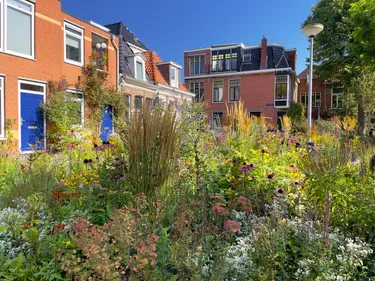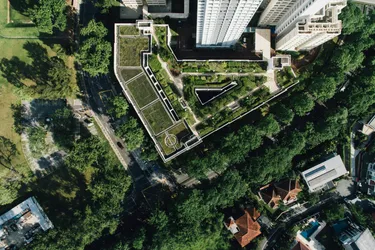
Rupert Masefield joins Axter to discuss 30 by 30, Biodiversity Net Gain and how roofs can contribute to nature positive development
As part of our Climate and Community Initiative, Axter is proud to be a Partner Investor in Wildlife at The Suffolk Wildlife Trust (SWT), a fantastic organisation with a mission to rewild local land, working with the community, as well as local government and businesses on nature conservation.
We sat down with the charity’s Planning and Advocacy Manager, Rupert Masefield to talk about his work, why biodiversity matters and how the Biodiversity Net Gain (BNG) requirements – recently delayed until January 2024 – will have a positive impact.
He shares how green roofs and other roofing solutions can help support sustainable ecosystems and provide wildlife habitats and the benefits for developers, construction companies and architects of engaging with expert support.
Hi Rupert, tell us a bit about SWT
We are Suffolk’s nature charity – the only wildlife conservation organisation exclusively focused on our county. We’ve been going since 1961, and we’re part of the Wildlife Trusts, a federation of similar organisations across the UK. Our aim is to make Suffolk a wilder county: to reverse wildlife declines here. Our work involves managing, and expanding, nature reserves and inspiring the community to get involved. We work with the whole local community, from young people to families, as well as landowners, farmers, businesses and local government on how we can all make the green spaces we care for – be that a garden, park or farm – a bigger, better and more connected landscape for wildlife.
We have a big goal to encourage 25% of people within the county to engage in some way with nature, taking action that benefits wildlife locally.
One in four sounds like a lot, especially with many people living in towns
It’s ambitious, but it’s important. Research shows that 1 in 4 is a tipping point. If you can achieve that, there’s enough awareness that it becomes self-sustaining. Rewilding our urban areas is vital, our Nextdoor Nature project, for example, is based in our largest town, Ipswich, and aims to find ways communities there can get involved using publicly accessible land, or gardens if they have them, to connect with and increase nature.
Nextdoor Nature builds on our earlier Ipswich hedgehog conservation initiative, which encouraged people to create a space in the corner of a garden where hedgehogs could hibernate, and do simple things like create holes in fences, so animals can transit.
Connectivity like that really matters. In our towns, green spaces can be very siloed. That is one-way green infrastructure – such as green and biodiverse living roofs – can make a difference. In densely populated areas, that may be the only way to deliver the various benefits you get from a green space – supporting biodiversity and making the urban area permeable for birds and butterflies and so on, but also cleaner air, the cooling effect in summer, and potentially offering an accessible park space for residents or workers.
What other goals does SWT have?
Last year, saw the adoption of a global Biodiversity Framework as a result of the UN’s COP15 meeting. One agreement that came from that is the 30 by 30 initiative, which is a commitment to see 30% of the world’s land and ocean area designated as protected, by 2030. Like many organisations, we’ve adopted that locally as a framework. We work to encourage local authorities, as well as developers and other businesses to ensure we can achieve that for Suffolk.
We need to make sure there is accountability and real action led by the Government, and the 30 by 30 initiative is a good way of making local and national efforts specific and measurable. It will definitely help that the recent Environment Act creates a duty for local authorities to enhance biodiversity, not merely conserve it. Specifically, there are now requirements for Biodiversity Net Gain, BNG, applying to all large developments from January, and smaller projects from later next year, so planning permission involves showing how you can, not just prevent a loss, but also bring at least 10% gain through your project.

Photo credit: Dan Hilliard and Suffolk Wildlife Trust. Suffolk Wildlife Trust’s vision is for the places where people live and work to be full of wildlife and nature-rich spaces.
Is there any advice you would give to architects, owners or developers on the BNG front?
Engage early is key advice. A good ecological consultant can show you it’s much less daunting than some people at first think. They can also show you how it is an opportunity, not a cost. There have been multiple studies showing that going beyond the 10% statutory minimum is much cheaper than might be thought, and easily recoverable in terms of people valuing adjacent green space, cleaner air and so on. Bear in mind how the calculation works: if your development creates a biodiversity loss of 30% in the first instance, say, you have to replace that as goal #1. Going from that to +10% or +20% isn’t very different. A report from Kent found that going from 10% BNG to 20% in most cases costs much less and is generally negligible, but has a big impact environmentally.
There are other resources available. Gloucestershire Wildlife Trust has worked with partners to create a great resource called Building with Nature. The RSPB worked with the NHBC Foundation on another useful guide, Biodiversity in New Housing Developments.
Through, SWT Trading Ltd, our team can offer specialist consultancy in ecology, conservation, and Biodiversity Net Gain. All profits are passed to Suffolk Wildlife Trust to help support our work. Wildlife Trust Consultancies have a network of organisations across the UK, other charities like the RSPB can also offer expert support. I’d encourage businesses to reach out to organisations – we are here to help.
You mentioned green infrastructure and the benefits green roofs offer for biodiversity – are there other ways roofs can have a positive impact?
Personally, I’m very interested in the possibilities inherent in multi-functional roofs. Biosolar roofs, for example, are a great way to create biodiversity and also reduce energy bills and non-renewable usage. There’s a beautiful synergy to it: the plants create cooling due to what’s called evapotranspiration, and the solar panels work more efficiently when they’re not overheating.
Blue roofs that hold water and ensure sustainable drainage are interesting. With a multi-functional blue-green roof, the water can be used for the plants on the green roof. More generally, the water collected by the blue roofs be directed to pools or swales or other constructive uses, such as supporting wetland areas.
A problem we have in this country is that our historic drainage infrastructure directs sewage and surface water to the same system. In an era of climate change, extreme weather events and increasing surface water issues, that’s one reason why you keep hearing about sewage discharge into nature: it’s mixed rainwater and sewage overflowing when the systems of storage are overwhelmed. One solution is to encourage the use of more sustainable systems such as blue roofs, which separate the two.
I’m aware of the project where Axter and the Wildfowl & Wetlands Trust are seeking to put a wetland on a roof in Norfolk, which sounds fascinating.
Finally, if you could wave a wand and get one big win for biodiversity, what would it be?
That’s a big one, and I think it would be awareness. While people have now heard of biodiversity – there is still so much to do. We’ve seen a transformational change recently in action about climate. Every council in my county has declared a climate crisis, but only one has declared a biodiversity crisis. It is important to understand that biodiversity loss is both a related and equally important crisis – climate change is the biggest factor contributing to biodiversity loss, but at the same time, biodiversity is a key part of the solution and critical to reducing emissions and adapting.
To support developers, architects, landowners and planners with the new BNG requirements – the Wildlife Trust has produced guidance on nature-friendly development– download it here: Housing Principles Report
You can find out more about the The Suffolk Wildlife Trust’s work, and their consultancy services here: Wilder Ecology – or reach out to your local Wildlife Trust.
Learn more about how your project's roof can support biodiversity: https://axter.co.uk/systems/biodiverse-living-roof
Axter offers a range of roof systems to suit every project – speak to the team to find out more.


